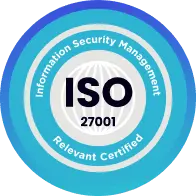When considering a product or service, people often rely on reviews from other users to make informed decisions.

User-generated content (UGC) is powerful because it provides authentic information, inspiration, and feedback based on real experiences. Brands can leverage UGC to build trust, community, and increase website traffic and brand awareness. Unfortunately, many marketers see UGC primarily as a social media strategy, overlooking its potential for driving SEO growth. In this article, you’ll discover how to implement a UGC strategy for SEO, create an optimized pipeline, and automate it to scale your website traffic.
Subscribe us to ream more!
- Prioritize understanding your channels, target audiences, and objectives
Before launching any marketing campaign , it is crucial to have a clear understanding of the people you are trying to reach, their needs, and how your offerings can address those needs. In the context of utilizing user-generated content (UGC) for search engine optimization (SEO), it is important to consider various channels such as social media, email, and public relations.
The first step in this process is to comprehensively analyze the different channels through which UGC flows and optimize the conversion funnels. Whether you focus on specific social networks, a particular product category, your brand’s blog, or a combination of these platforms, it is essential to look at the bigger picture and ensure that these channels work cohesively to support your overall objectives.
For example, if your goal is to stimulate meaningful discussions in the comment section of your blog, a strategic approach would involve promoting these discussions on social media platforms. By measuring the impact through metrics like social traffic, organic search traffic, and engagement indicators (such as comments), you can gauge the effectiveness of your efforts much more quickly than waiting for SEO-generated traffic to materialize.
- Plan for scale with automation
When implementing a user-generated content (UGC) strategy, it’s important to plan for scalability and anticipate potential challenges and opportunities for SEO. Scaling UGC can become overwhelming if manual curation or light automation is insufficient to handle the influx of content. To address this, it’s crucial to define and implement the right set of tech solutions and processes from the beginning to enable seamless collection of UGC at scale.
Finding the right balance between automation and manual review is a key consideration when planning for scalability. Implementing systems and automation helps establish a smooth content flow, allowing your team to identify valuable content and filter out low-value or thin content (such as pages with little content or relevance to user needs) more efficiently.
Automation can cover several elements in the UGC review process, reducing the amount of content that requires manual review. This includes ensuring user and content usage rights are properly addressed through legal language, implementing barriers to prevent inappropriate content (such as profanity or defamation), and enforcing acceptable content guidelines (e.g., no AI-generated or duplicate content).
While many UGC tools offer basic automation features for collecting and filtering content, more complex SEO-focused automation may require collaboration with your development or tech team. Achieving scalable optimization through automation may involve a cross-functional project that leverages the expertise of different teams.

- Incorporate SEO into your UGC strategy
When it comes to a brand’s website, there are numerous types of user-generated content (UGC) that can have an impact on SEO. By integrating SEO into your UGC strategy from the beginning, you can greatly increase your website traffic. A key aspect of this is how you optimize and index UGC pages.
Optimizing UGC involves examining specific elements within the page’s content, such as title tags, headings, page copy, and images. These elements help Google determine the relevance of the content to a user’s search query. However, optimizing these elements at scale for UGC pages can be challenging.
Pinterest provides a great example of how to tackle this issue. They prompt users to write descriptive text when uploading an image, which has become a standard practice on social media platforms. To ensure high-quality and accessible descriptions, Pinterest developed an automated process that generates human-written, long-form text for millions of images. Other platforms like Instagram have since adopted similar approaches.
Encouraging users to provide detailed content and context can lead to richer and more engaging user-generated content (UGC). By automating fields like title tags, page headings, and metadata using the content provided by users, you can improve performance and enhance search engine optimization (SEO). For example, you can use the user-generated item name and category to create an SEO title, and include the submitted description and other relevant fields in the meta description.
Additionally, mapping user-generated reviews to products through structured data allows them to appear in organic search results, increasing the likelihood of users clicking on your website’s result on the search engine results page (SERP).
However, when dealing with user-generated content, it’s important to consider indexation and quality control. Some user submissions may be spammy, low-quality, or potentially harmful to your brand. Properly surfacing the user-generated content that aligns with your goals is crucial. Thin content and crawl budget issues are common challenges in managing large-scale UGC, which can impact your SEO over time.
By addressing these technical SEO concerns, leveraging the power of automation, and structuring user-generated content effectively, you can increase the visibility of UGC, scale your SEO efforts, and drive more targeted traffic to your website.
To consistently achieve the desired quality level, audit your UGC forms and optimize fields to collect the content you want to index. For example, you can include required fields, ask the right questions, and enforce character-count minimums to ensure users provide adequate information.
It’s a delicate balance to determine requirements to maximize the quality AND rate of user submissions. For example, you don’t want to require many fields that discourage users from submitting. It’s worth considering automatically deindexing content that doesn’t meet your required minimums, as opposed to not allowing users to upload it in the first place.
- Build automation into your indexation strategy
Improving the system you use to source content can create a more robust pool of UGC quality. Since low-quality UGC can slip through the cracks, building automation into your indexation strategy is essential.
The meta robots directive is one of the most vital tools at your disposal, which tells Google whether to index a page via an “index” or “noindex” tag. One potential approach to avoid thin content issues is automatically setting the meta robots tag on new UGC pages. You can base this on quality control factors like the number of fields the user filled out, the character count of specific crucial fields, or similar conditions.
Also, consider building a function to manually override the automated classification. This allows human curation to have the final say in one-off instances when it matters — like when a piece of UGC has “thin content” and 50 amazing backlinks pointing at it.
- Encourage Content Promotion with User-Friendly Tools
Whether you’re focusing on boosting product awareness, driving blog engagement, or fostering a vibrant community, a vital aspect of your User-Generated Content (UGC) strategy lies in motivating both new and returning users to share their contributions. This element of your UGC plan revolves around simplifying the process of sharing published content across various platforms, such as social media, blogs, and websites.
One effective approach is to incorporate clear Calls to Action (CTAs) and sharing buttons into your UGC page templates, akin to the “Click to Tweet” boxes found on Moz. By doing so, you create a seamless experience for users, enabling them to effortlessly share their submissions and any content related to them with their networks, which can include new users you’re looking to engage.
When crafting your call to action, consider the following points:
- Use straightforward language to delineate what you’re requesting users to share and how they can do it.
- If necessary, provide context on why they should share and highlight the benefits for them.
- Specify the distribution channels, be it social media buttons or code snippets that can be easily embedded on their blogs or websites.
- Include sample content to serve as an inspiration or template for users.
- For UGC campaigns featuring contests or giveaways, incorporate details such as judging criteria, rules, and prize information.
- Additionally, enhancing social sharing and generating backlinks to UGC plays a pivotal role in maximizing the SEO outcomes of your campaign.
DOWNLOAD our FREE GUIDE to learn more about SEO-optimisation!(GUIDE6)
- Evaluating Impact and Measuring Success
Irrespective of how you incorporate User-Generated Content (UGC) into your broader marketing strategy, it’s imperative to establish benchmarks and devise a means to gauge your achievements. This holds true even when leveraging UGC to boost your SEO efforts. Gaining a comprehensive understanding of your Key Performance Indicators (KPIs) and establishing a method for quantifying the Return on Investment (ROI) derived from your UGC strategy is paramount.
Alongside traditional UGC metrics like heightened engagement and conversion rates, you should also consider SEO-specific metrics that align with your target content or customer funnel stage. Some ideas in this regard encompass:
- SEO performance metrics: Monitoring rankings, impressions, organic traffic, and the growth of backlinks.
- Content engagement metrics: Assessing metrics such as pages per session, time spent on site, and content consumption.
- Micro conversions: Tracking UGC submissions, user reactions, and comments.
- Macro conversions: Keeping tabs on signups, overall sales, and average order value (AOV).
- User segment metrics: Analyzing the behavior of returning visitors or the rate of returning visitors (RVR).
- Loyalty metrics: Evaluating the Customer Engagement Score (CES), repurchase ratio, and lifetime value (LTV).
- Advocacy metrics: Calculating the Net Promoter Score (NPS), social share counts, and earned link counts.
In addition to quantifying and reporting on your success, it’s crucial to determine how to utilize this data for ongoing enhancements. Identify areas where performance is lacking and make strategic adjustments to rectify weaknesses or bottlenecks in your strategy. For instance, analyze which user segments are generating the most potent UGC, and devise methods to target and incentivize them for increased contributions.
- Integrating UGC Across Multiple Channels

Even when your primary objective is to gather and feature user-generated content (UGC) on your brand’s website, with a strong emphasis on SEO, it’s essential to recognize the potential of this content in other distribution-focused channels like social media and email. Consider various ways to repurpose UGC in different channels:
Empower your social media team to curate the most compelling UGC for future social media posts , ensuring a consistent flow of engaging content.
Incorporate UGC elements, such as user-created content or customer testimonials, into your email marketing campaigns to add authenticity and trust.
Experiment by testing high-quality UGC images against in-house or stock photography to gauge which resonates most effectively in paid advertisements and landing pages.
Leveraging UGC for SEO is not a one-size-fits-all strategy. It’s essential to implement best practices thoughtfully, keeping in mind what aligns most authentically with your brand, product, and content. While TikTok video contests might be a trending approach, it doesn’t necessarily mean they are the right or sole solution for sourcing UGC on your website. Stay true to your users to generate UGC that resonates with your audience. Then, streamline the process while emphasizing quality and scalability to build a content library that not only leaves a lasting impression but also boosts your online visibility.
Author
-

Alisha is the Editor-in-Chief of Search Engine Journal. Before that, she covered tech for News & Trends, content editing, and social strategy at AdClickAgency. Alisha holds a BA in English and Journalism from Mount Holyoke College and an MBA in Marketing from San Francisco State University. Her work has also appeared in Thrillist, the Boston Herald, and EcoSalon, and she's based in St. Petersburg, Florida.
View all posts







